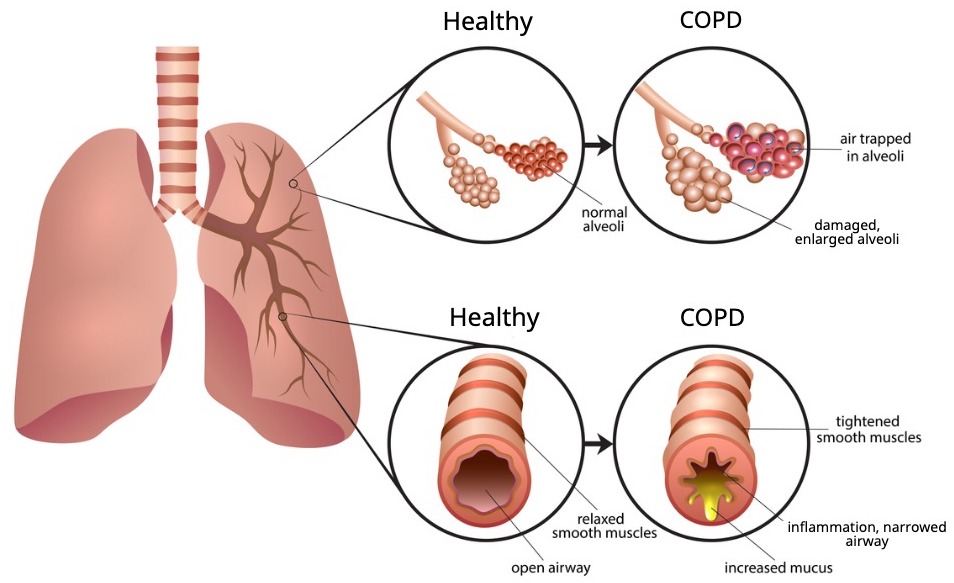
UNDERSTANDING COPD
COPD is an umbrella term that refers to a group of chronic lung conditions characterised by difficulty emptying air from the lungs. This occurs due to changes in the breathing tubes (airways) caused by long-term swelling, inflammation and mucus, and/or a loss of lung recoil caused by damaged air sacs (alveoli). This is shown in the figure below:
COPD stands for:
C – chronic (long term)
O – obstructive (partly blocked airflow)
P – pulmonary (lung)
D – disease (disorder)

You may hear terms such as emphysema, chronic bronchitis or even chronic asthma used when describing COPD. Each condition is different, but can also overlap or co-exist together.
- Emphysema typically involves destruction of the very small air sacs (alveoli)
- Chronic bronchitis typically involves persistent sputum (phlegm) production and airway inflammation
- Chronic asthma typically involves airway narrowing, inflammation and/or sputum production
COPD is only confirmed when lung function tests (called spirometry) detect chronic airflow obstruction. You may therefore have clinical features of emphysema, chronic bronchitis and/or chronic asthma but not meet the definition of COPD. Further information is available on the diagnosing COPD section of this website or in the video below.
Different terms are sometimes used to describe COPD – if you are uncertain of your diagnosis, ask a healthcare professional.
Causes of COPD
COPD is caused by a complex interaction between many different factors. These can include exposures that contribute directly to the lung injury (e.g. smoking), genetics (including alpha-1 antitrypsin deficiency), the impact of other lung disease processes (e.g. infections), abnormal lung growth and/or development, and environmental influences (including work exposures).

Tobacco smoking remains the most prominent risk factor for developing COPD, however 20-40% of people with COPD have never smoked. Many people with COPD report negative experiences of stigma, guilt and shame related to perceptions their disease is self-inflicted. It is important to be aware of such feelings and ensure each person receives the respect, care and support they deserve. Further information related to stigma can be found here.
Further information is available from lung health societies if you wish to learn more about COPD. The following links offer an overview of COPD, advice on living with COPD, or a detailed online patient education program.